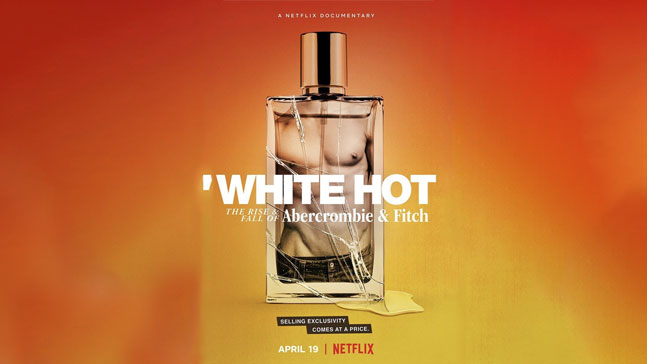What was the reason behind Abercrombie & Fitch's downfall?

Netflix's new documentary, White Hot: The Rise & Fall of Abercrombie & Fitch brings to light the reason for Abercrombie & Fitch's downfall: racist toxic work culture
Imagine you are back in 2004, drinking your Starbucks, listening to music on your iPod Classic, holding bags from Victoria's Secret and Ralph Lauren and all ready to walk into an Abercrombie & Fitch store to buy their newest jeans and T-shirts.
Ah, good times.
While brands like Starbucks, Apple and Ralph Lauren continue to dominate the pop culture, Abercrombie & Fitch have long been forgotten. While ex-CEO Mike Jeffries was the reason why the brand was known to be the 'coolest brand of the 90s and 00s', Netflix's new documentary, White Hot: The Rise & Fall of Abercrombie & Fitch follows the reason why A&F was able to easily shoot to fame and plummet down.
Everyone smelled like Abercrombie & Fitch cologne in the 1990s — whether they wanted to or not. White Hot: The Rise & Fall of Abercrombie & Fitch is now on Netflix pic.twitter.com/sCM7887dJl
— Netflix (@netflix) April 19, 2022
The documetary was able to explain viewers, in quite a detail, that there was one core reason why A&F failed: racist and toxic work culture.

The once uber-cool brand or how former brand model Ryan Daharsh explains it in the documentary, "If you weren’t wearing Abercrombie, you weren’t cool," was known to follow strict standards, designed by Jeffries himself. And by standards, we don't just mean in terms of clothing but also how the employees and models presented themselves at the A&F stores.
When Jeffries took over Abercrombie & Fitch in 1992 as the CEO, his goal was to create turn the brand into an all-American, exclusive place for high school and college students to shop from.
Raise your hand if you have ever been personally victimized by Abercrombie and Fitch. pic.twitter.com/d9SNf128MQ
— NetflixFilm (@NetflixFilm) April 23, 2022
To do so, he found a way to merge Calvin Klein's sex appeal and the all-American preppiness of Ralph Lauren. As Washington Post's senior critic-at-large Robin Givhan says in the documentary, "Just aspirational enough but not so expensive that it was out of reach."
But for Jeffries, that wasn't enough. He made sure Abercrombie employees in the stores fit the image of the "All-American" look, meaning that A&F recruiters were hiring only "good-looking people".
A&F recruited "good looking people" by focusing on particular college campuses in the area and go after the best looking frat guys to become models or employees.
Former A&F recruiter, Christopher Clayton confirms this in the documentary, "As a manager at Abercrombie, they teach you very early on about recruiting. You don't just have to recruit but you have to recruit good-looking people. This is what good-looking looks like. We literally had a book."
I worked for Abercrombie in 2005. In my group interview we were told that “model” was the job title for attractive customer-facing employees .. and the “impact” role was for non-attractive team members in the stock room. IN THE INTERVIEW. Should I reveal more? #WhiteHOT #tea
— candacewithacha (@candacewithacha) April 20, 2022
The book that Clayton mentions specified what was acceptable and passed as good looking in an employee. The book, also known as the company's aesthetic manual said that only natural hairstyles were acceptable on employees. Dreadlocks were not acceptable. Gold chains for guys weren’t allowed and female employees were only able to wear subtle jewelry.
The key words found in the book were: Natural, American, Classic: The A&F look
Notably, the documentary also highlights A&F’s racist hiring process. As multiple ex-employees mentioned in the documentary, people of colour, be that any colour, were not employed at the stores as 'models'.
watching #WhiteHot and cheering for the bravery of Carla Barrientos, Dr. @anthonyocampo, and Jennifer Sheahan, the former Abercrombie employees who spoke out against discrimination and paved the way for changeWhite Hot: The Rise and Fall of Abercrombie & Fitch is now streaming pic.twitter.com/ZBYsLInOqv
— Golden (@netflixgolden) April 19, 2022
If that wasn’t enough, the brand was also producing graphic t-shirts with racist caricatures of buck-tooth, slant-eyes Asians with racist slogans that read, "Pizza Dojo: You Love Long Time: Eat In or Wok Out" or "Wong Brothers Laundry Service: Two Wongs Can Make It White”.
(Fun fact: the documentary says that the team that was deciding these slogans had one Asian-American as its member)
Asian-Americans protested against these t-shirts and eventually Abercrombie had to remove these from stores, saying, "We thought Asians would like these shifts."
But the protests were only the beginning of A&F’s fall. The brand went on to face a class-action discrimination lawsuit, sexual misconduct allegations against the brand’s primary photographer Bruce Weber during the early days of #MeToo, the infamous 2006 Salon interview of Mike Jeffries which led to a 2013 petition for inclusive-sized clothing and former L Brands CEO and A&F owner Les Wexner's ties with convicted sex offender, Jeffrey Epstein.
By 2014, Mike Jeffries was forced to quit as CEO of Abercrombie and Fitch and vaished from public eye.
Released on April 19, White Hot: The Rise & Fall of Abercrombie & Fitch, the documentary brought important themes that were prevelant during the 2000s back into public view. The documentary has been able to create enough storm for A&F to release a statement of its own.
Check it our here:
View this post on Instagram
Any guesses if there will be a Victoria's Secret or Forever 21 documentary soon?

